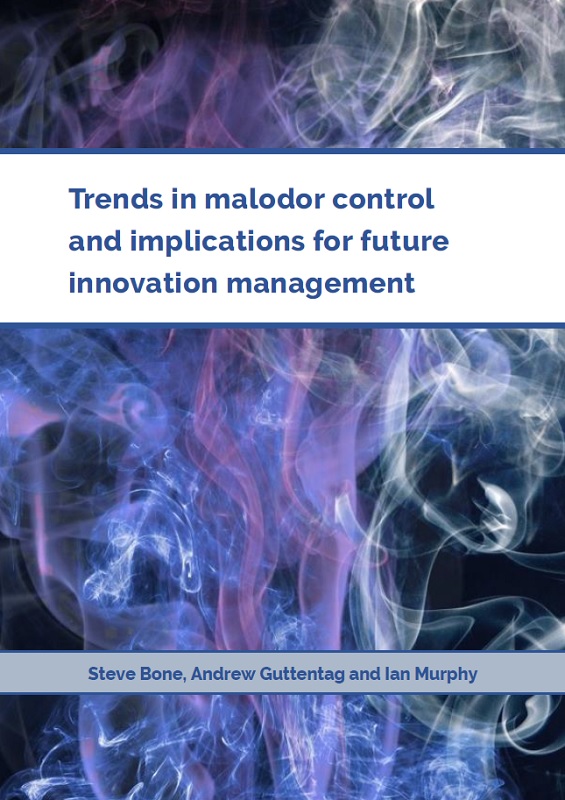
The removal of unpleasant smells from the human body, fabrics and living spaces has been a challenge across the years. Despite considerable investment by large companies there is not yet a complete solution. Now authors of a new R&D management white paper on the subject, Steve Bone and Ian Murphy of nu Angle and Andrew Guttentag, Research Chemist in Transformational New Product Development for Church & Dwight Co. Inc, argue that an external scouting and multidisciplinary approach to technology strategy is creating breakthrough innovation.
Malodour Control is one example of how good R&D management can be used to solve difficult innovation problems and create game changing products.
Our sense of smell is very sensitive to levels of odours at parts per billion. Attempts in history therefore to reduce odours have only been partly successful. It is only in the last few decades that advances in science have made it possible deal with them more effectively, but more needs to be done through good R&D management.

Malodour control is complex as smell is highly subjective and linked to cultural and psychological factors. From the evolutionary point of view, human olfaction is one of the oldest senses, allowing for seeking food, finding a sexual mate, recognizing danger or communication. It is also a protective sense as it signals the detection of potential illnesses or infection.
Smells have emotional meaning and are connected with memory, which creates cultural and deeply personal preferences and objections to certain aromas. The result is that efforts to mask odour using scents and sprays can, in some cases, create a sensory experience that is equally as unacceptable as the original problem.
From masking to removal
Although flower and spice fragrances and perfumes derived from animals have been used for centuries to ‘mask’ smells, the first attempt to ‘remove’ them was in 1846 when Arm & Hammer introduced baking soda (sodium bicarbonate).

This amphoteric substance can act as both an acid and a base. Odour-causing compounds react with it to form a less volatile salt, reducing the observed odour. For example, when butter goes rancid, it releases butyric acid, a particularly foul smell. Baking soda reacts with butyric acid to form sodium butyrate, which has little smell because it is not volatile.
Many odours have been removed by improved sanitation and on a clean body sweat doesn’t really have a smell, it is the bacteria that feeds on perspiration that causes the odour. This has only been recognised recently, so early solutions to the problem focussed on antiperspirants that were designed to clog the pores and block sweat.
New strategies revealed
The authors of the white paper ‘Trends in malodor control and implications for future innovation management’ have completed several strategic assignments in this area and identify different parameters of the space, such as how to define and measure malodours, given that it is so subjective both individually and culturally.
 They conclude that an innovative solution lies in the clever combination of different technology management approaches to masking or removal.
They conclude that an innovative solution lies in the clever combination of different technology management approaches to masking or removal.
Methods of odour removal include: adsorption, where the odorous ions, atoms, or molecules ‘stick’ to the surface of another element; absorption, where the malodour infuses into the bulk of the substrate; and entrapment, where volatile molecules are removed from the air by interacting and encapsulating them (e.g. cage compounds).
Other approaches to removing the source of the odour could be microbial or chemical, including vapour chemical reaction to destroy the odour, surface coatings; photocatalytic activity; or biological activity.
A different approach needed for effective technology strategy
The authors conclude that many of these approaches are looking promising but that to exploit these opportunities a radical paradigm shift is required in the approach taken to malodour control innovation.
It has been found that rather than have small R&D teams working in isolation it is proposed that the technology management strategy needs to be multidisciplinary, encompassing marketing, operations and R&D, and informed by insights from external experts drawn from different fields. Finding these wide-ranging experts and changing the internal R&D management culture is difficult and one reason why more progress has not been made. The only way would be through a team facilitated structured approach using good practice tools and techniques that look outside the company’s sector.
Successful approach outlined
In their white paper the authors describe the creation of an internal malodour platform team, outline the six areas of innovation management that need to be tackled at the same time and define a well proven process for achieving a successful technology strategy.
Read the paper: Trends in malodor control and implications for future innovation management: by Dr Steve Bone, Co-founder and Director of nu Angle, strategic technology management consultancy; Dr Andrew Guttentag, Research Chemist in Transformational New Product Development for Church & Dwight Co. Inc; and Ian Murphy, senior adviser to nu Angle.

